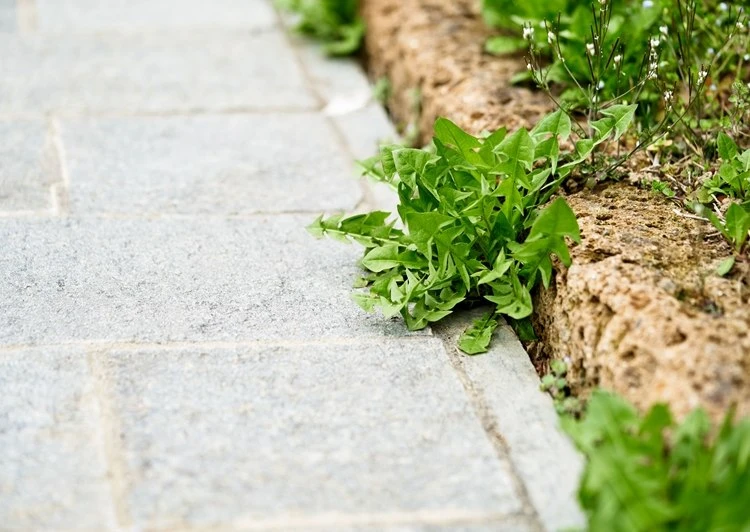If wild plants have spread in joints, lawns and beds, you cannot achieve lasting results just by weeding. Use sand against weeds to finally get the garden weed-free!
Correct use of sand against weeds in joints
The right moment: In principle, you can work sand into the joints throughout the gardening season. For best effect, choose a sunny day from May to late August.
The so-called joint sand is a special mixture of crushed granite or quartz with a grain size of 0-2. If you use it to fill gaps between paving stones and flagstones on the terrace, garden path or driveway, weed growth can be suppressed. The basic rule is: the weeds cannot find any breeding ground. The seeds cannot germinate and plants that have already sprouted between the joints do not get any more light through the layer of sand and wither.
For best results, first water any wild plants growing between the joints with boiling water. Then clean the joints well with a broom and then sweep the sand into the joints. For the best possible results, you can wash it down with lukewarm water.
Sand the lawn and drive out weeds over a large area
The right timeSanding the lawn is actually in the spring. However, if it has rained a lot in August and the wild plants have sprout again in full force, you can sand it again in late summer or early autumn.
Basically: Wild plants in the lawn are a sign of firm, loamy soil and/or waterlogging. The garden soil is additionally compacted on heavily used lawns that are often walked on. In this case, sanding can help. A layer of sand can also improve permeability and prevent the formation of rot.
Perhaps the biggest advantage of this method is that you can suppress weed growth over a large area with little effort. The sanding also promotes the growth of the grasses, they grow denser and faster and shade the wild plants. As a result, the weeds are effectively suppressed.
Sanding lawn:
First mow the lawn, the stalks should be a maximum of 4 cm high. If the temperatures are around or below 20° Celsius and it has rained frequently in the past few weeks, you can scarify the lawn. Scarifying should be avoided during heat waves or drought. Then distribute around 5 kg of sand per m² (7 kg per m² for clay soil) of lawn area with the back of a rake. The layer of sand should not completely cover the grasses, you should be able to see their tips after sanding. Then water the lawn (if the weather is rainy, water sparingly).
Use the weed fleece and sand correctly in the bed
There is no specific time, but it is most effective when you:
Cover the vegetable patch with weed fleece after harvest and only replant in the spring. Sand the flower bed in late summer and cover it with weed fleece.
You can also use sand against weeds in the bed. Most often it is used in combination with weed fleece. The reason for this is quite simple: a layer of sand provides no breeding ground for wild plants and the weed fleece obscures them. In contrast, mulch provides nutrients that allow wild plants to regrow.
When laying, proceed as follows:
First remove all plants in the bed and pull out weeds. Then spread a layer of sand, about 4 kg per m² on the bed. Level the surface and let it rest for about 5 days. Lay the weed fleece without wrinkles and fix it with stones. If you want to replant the bed, make small holes in the fleece and place the young plants in the bed.
